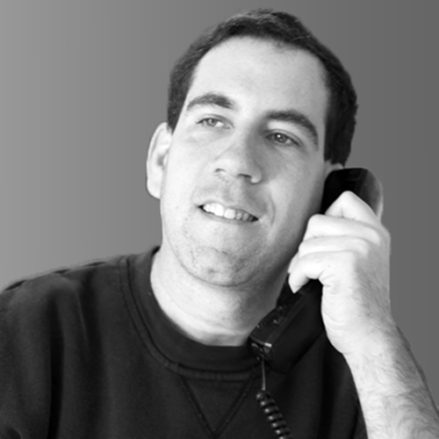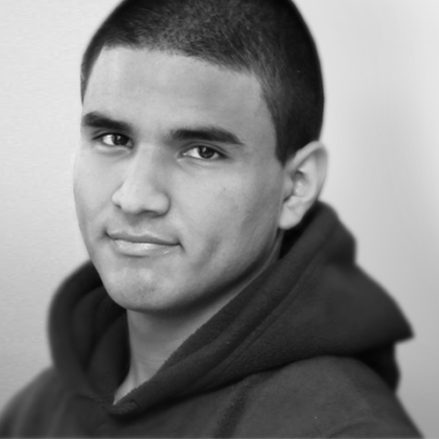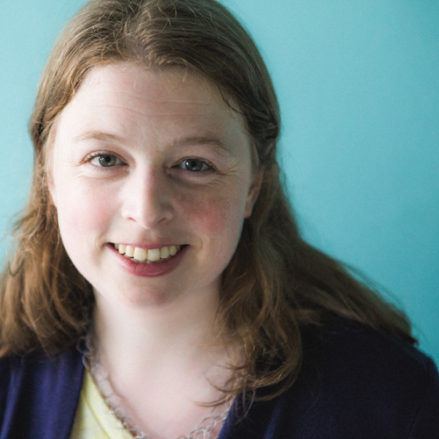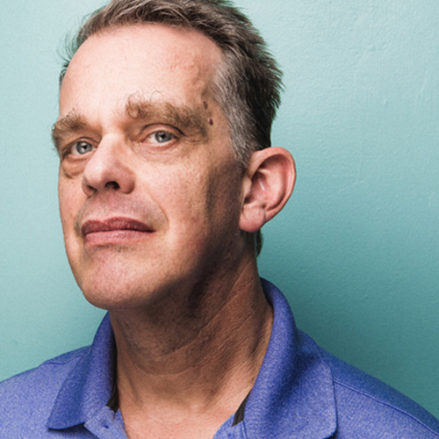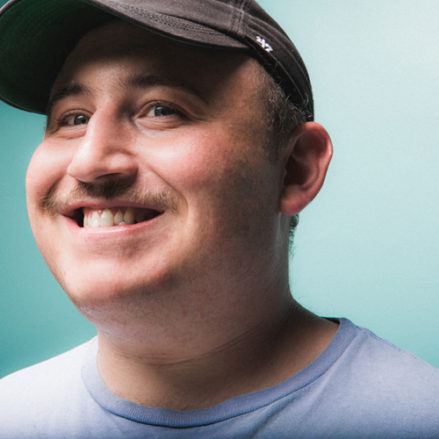On November 3, 2020, Americans will vote for their next President. The choice will come down to our incumbent President Trump and the Democratic challenger.
Between now and then, there are a lot of other decisions to be made – like who the Democratic candidate will be. Throughout the primary process, Americans in every state get to vote for their choice to represent the Democratic party. In Illinois, our primary is on March 17.
Many voters feel this election is the most important of our lifetimes, but that’s far from the only exciting aspect of Election Day 2020. In 2018, people with disabilities came out to vote in record numbers, surging by 8.5%. In 2020, many organizations hope to increase the turnout of voters with disabilities even more.
Keep reading this blog to learn more about registering to vote & learning about the candidates in Illinois.
How To Register To Vote
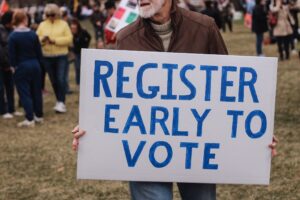 In Illinois, you can register to vote by mail until the February 18th deadline. If you are able to register online, the deadline is extended to February 29th. But first, there are several requirements. Illinois voters must:
In Illinois, you can register to vote by mail until the February 18th deadline. If you are able to register online, the deadline is extended to February 29th. But first, there are several requirements. Illinois voters must:
– Be a U.S. citizen
– Be 18 by November 3, 2020
– Live in your voting precinct for 30 days before the election
– Not be serving jail time as a result of a conviction
– Not claim the right to vote anywhere else
If you meet these criteria, then congratulations! You can register to vote. The next step is to start Illinois’ online voter registration application. The application will ask you for some basic identifying information such as:
– Your State ID/Driver’s License
– Your name
– The last 4 digits of your Social Security number
– Your birth date
– And your address
And that’s how you register to vote! If you are ever encountering problems or need support, you can contact the Board of Elections. Life skills tutors can also support you in registering to vote.
How To Be An Educated Voter
Now that you’re registered to vote, it’s time to make some educated decisions about who you cast your ballot for. To become an educated voter, it’s necessary to learn about the candidates to see who would represent you best and work hard for your interests.
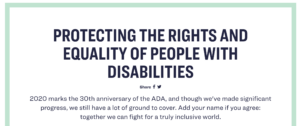 Almost all of the major candidates for the Democratic nomination have drafted disability policies and plans – for the first time. As a voter with disabilities, you will want to research these plans, but make sure that you are also researching other issues & local ballot initiatives too. The following major candidates have plans for people with disabilities on their websites:
Almost all of the major candidates for the Democratic nomination have drafted disability policies and plans – for the first time. As a voter with disabilities, you will want to research these plans, but make sure that you are also researching other issues & local ballot initiatives too. The following major candidates have plans for people with disabilities on their websites:
– Mayor Pete Buttigieg
– Senator Amy Klobuchar
– Senator Bernie Sanders
– Senator Elizabeth Warren
– Andrew Yang
The League of Women Voters has general information about what will be on your ballot and some research about the candidates. Check out their site for important dates, including when early voting begins and what is on your ballot.
Finally, the AAPD’s Voter Resource Center includes information specific to disability issues. They have also teamed up with National Council for Independent Living (NCIL) for candidate questionnaires regarding disability issues. Only Pete Buttigieg, Bernie Sanders, and Elizabeth Warren have completed it; read the candidates’ responses here.
How To Vote
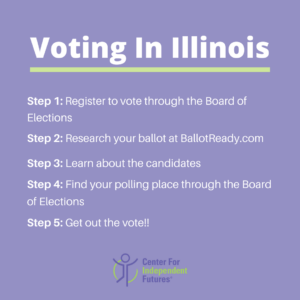 Illinois’ early voting period runs from March 2 – March 16. You can also vote on election day, March 17th from 6am – 7pm. Use the Board of Elections’ Voter Registration Lookup tool to find your polling location.
Illinois’ early voting period runs from March 2 – March 16. You can also vote on election day, March 17th from 6am – 7pm. Use the Board of Elections’ Voter Registration Lookup tool to find your polling location.
In Illinois, we have what are called “closed primaries.” This means that in order to vote, you need to pick a party ballot. You can choose between the Republican or Democratic ballots when you enter your voting location.
Once the poll workers have found your registration information and verified you are at the correct location, you will choose your ballot. After choosing your ballot, you can begin making your choices.
(PRO TIP: You can download your ballot beforehand from BallotReady and make your choices ahead of time! Just print it out, research the options, and bring it with you to your polling location.)
Poll workers will be able to assist you as necessary, depending on the type of voting machines your location has. Don’t be afraid to ask for help!
Being an Active Citizen
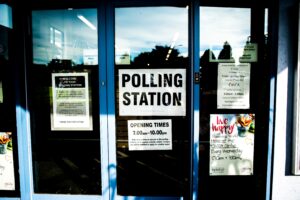 Now that you’re a registered, educated voter, what are the next steps you can take? This is the time to choose your candidates and then volunteer! You can call, text, or knock doors to spread the word about your favorite candidate.
Now that you’re a registered, educated voter, what are the next steps you can take? This is the time to choose your candidates and then volunteer! You can call, text, or knock doors to spread the word about your favorite candidate.
So, between now and March 17th, how will you use your rights to become a voter with disabilities and an active citizen?
Looking for information about the 2020 General Election? This blog from July includes important information about voting by mail and how to research candidates.

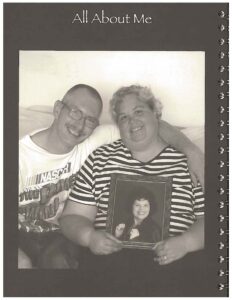 When she talked about her dreams with her Dream Team during her first Full Life Future Planning™ session, she talked a whole lot about the picture of the bride and groom that she included in her Dream collage (with her boyfriend’s name under the picture of the groom).
When she talked about her dreams with her Dream Team during her first Full Life Future Planning™ session, she talked a whole lot about the picture of the bride and groom that she included in her Dream collage (with her boyfriend’s name under the picture of the groom).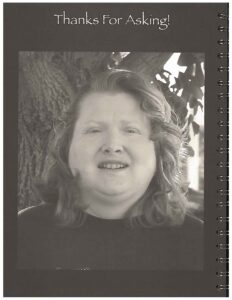 Michele was very quiet during the initial classes, but grew more open over time. She let her network know she was interested in nursing, and then she found a way to get involved. She discovered she wanted to work with animals; she started working at a pet shelter and loved it.
Michele was very quiet during the initial classes, but grew more open over time. She let her network know she was interested in nursing, and then she found a way to get involved. She discovered she wanted to work with animals; she started working at a pet shelter and loved it.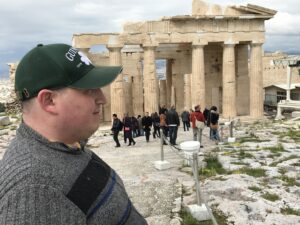 My parents picked me up from Harrison House in Evanston, and Howard drove me to Chicago O’Hare International Airport where I would board my flight from Chicago, Illinois to Minneapolis, Minnesota. At Minneapolis Saint Paul International Airport, I waited in the traveler’s assistance section. Then, I would board a Delta Airlines flight from Minneapolis, Minnesota to Newark, New Jersey.
My parents picked me up from Harrison House in Evanston, and Howard drove me to Chicago O’Hare International Airport where I would board my flight from Chicago, Illinois to Minneapolis, Minnesota. At Minneapolis Saint Paul International Airport, I waited in the traveler’s assistance section. Then, I would board a Delta Airlines flight from Minneapolis, Minnesota to Newark, New Jersey. 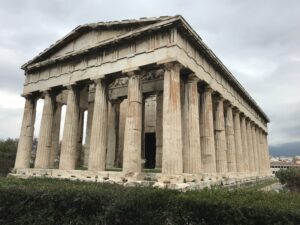 When I woke up on my flight, I was above the Atlantic Ocean. The flight from Newark to Athens took about 10 hours traveling east. On the airplane, I was served scrambled eggs and potatoes for breakfast, and I had a cup of coffee with cream and no sugar to drink with my breakfast. I also watched a movie on the airplane called
When I woke up on my flight, I was above the Atlantic Ocean. The flight from Newark to Athens took about 10 hours traveling east. On the airplane, I was served scrambled eggs and potatoes for breakfast, and I had a cup of coffee with cream and no sugar to drink with my breakfast. I also watched a movie on the airplane called  Later, me and Kailash ate lunch at the Monastiraki Square. After that, we took a tour of the Athenian Agora where there was the Library of Hadrian. I learned how the Roman Empire conquered and defeated civilizations such as the Greek Empire or Egyptian Empire. When invading Greece and Egypt, the Roman Empire burnt and destroyed buildings, and then they constructed and built their own new buildings. That is called imperialism. Other examples include the Babylonians, the Greeks, the Romans, the Venetians, the Egyptians, and the Chinese and also the British Empire and the Russian Empire and also American imperialism.
Later, me and Kailash ate lunch at the Monastiraki Square. After that, we took a tour of the Athenian Agora where there was the Library of Hadrian. I learned how the Roman Empire conquered and defeated civilizations such as the Greek Empire or Egyptian Empire. When invading Greece and Egypt, the Roman Empire burnt and destroyed buildings, and then they constructed and built their own new buildings. That is called imperialism. Other examples include the Babylonians, the Greeks, the Romans, the Venetians, the Egyptians, and the Chinese and also the British Empire and the Russian Empire and also American imperialism. Our final stop was on the island of Aegina where I ate a waffle with chocolate ice cream and whipped cream and covered in chocolate syrup. It tasted rich and velvety and moist and creamy and crispy. On the boat cruise back to Athens, we listened and danced to authentic Greek music such as Zorba’s dance.
Our final stop was on the island of Aegina where I ate a waffle with chocolate ice cream and whipped cream and covered in chocolate syrup. It tasted rich and velvety and moist and creamy and crispy. On the boat cruise back to Athens, we listened and danced to authentic Greek music such as Zorba’s dance.  Finally, we went back to the Philippos Hotel and we rested and relaxed there. Later at night, Kailash and I went to eat dinner at an Italian restaurant called Bel Paese. “Bel Paese” means “beautiful town” in Italian. For dessert, I had a slice of apple pie, and Kailash had coffee with baklava for dessert.
Finally, we went back to the Philippos Hotel and we rested and relaxed there. Later at night, Kailash and I went to eat dinner at an Italian restaurant called Bel Paese. “Bel Paese” means “beautiful town” in Italian. For dessert, I had a slice of apple pie, and Kailash had coffee with baklava for dessert. 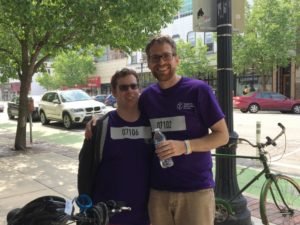 Two years ago, Independent Futures partnered with an agency on the west side of Chicago. One of our tutors, Rob Larson, initially trained our new partner on what it meant to provide person-centered service.
Two years ago, Independent Futures partnered with an agency on the west side of Chicago. One of our tutors, Rob Larson, initially trained our new partner on what it meant to provide person-centered service. 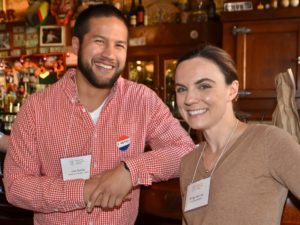 Jake Rohde, a training consultant and tutor, visited the agency late this summer. Whereas Rob taught the organization about our philosophy, now Jake would work to help implement the My Full Life tool.
Jake Rohde, a training consultant and tutor, visited the agency late this summer. Whereas Rob taught the organization about our philosophy, now Jake would work to help implement the My Full Life tool. 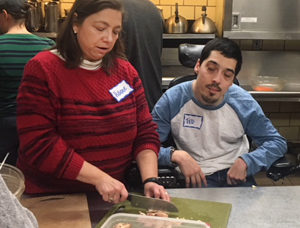 Since then, Linda’s behavior has changed dramatically. Like everyone does, she still may have difficult days. But at the end of most days, Linda visits her coaches and fellow participants with a calendar, marks off the day, and she eagerly tells each of them, “Today was a good day.”
Since then, Linda’s behavior has changed dramatically. Like everyone does, she still may have difficult days. But at the end of most days, Linda visits her coaches and fellow participants with a calendar, marks off the day, and she eagerly tells each of them, “Today was a good day.” Our partner’s next step is to continue interviewing their participants, building plans for each individual they serve. Jake will return to train the agency on using My Full Life as a goal-tracking and skill development tool.
Our partner’s next step is to continue interviewing their participants, building plans for each individual they serve. Jake will return to train the agency on using My Full Life as a goal-tracking and skill development tool. 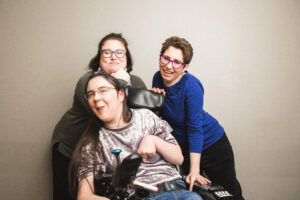 On #GivingTuesday, December 3, the Center for Independent Futures community came together to see the difference one day could make in the lives of individuals with disabilities. The total is in: more than $26,000 raised in just 24 hours! Together, we’re creating opportunities for all individuals to contribute their gifts, making the entire community stronger.
On #GivingTuesday, December 3, the Center for Independent Futures community came together to see the difference one day could make in the lives of individuals with disabilities. The total is in: more than $26,000 raised in just 24 hours! Together, we’re creating opportunities for all individuals to contribute their gifts, making the entire community stronger.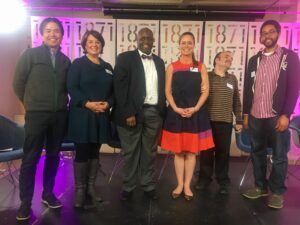 In April, Independent Futures
In April, Independent Futures 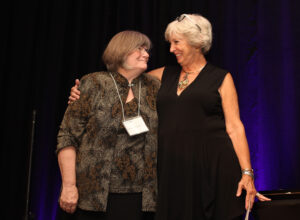 For Something’s Cooking, we changed the whole name! Inviting local breweries to participate in the first ever Independent Futures Best Brew Award, we introduced our community to
For Something’s Cooking, we changed the whole name! Inviting local breweries to participate in the first ever Independent Futures Best Brew Award, we introduced our community to  Erika Wade joins us from Union Leagues Boys & Girls Club as our new Director of Operations. Erika has been overseeing our new budget for 2020, executing behind-the-scenes changes to our processes, and brightening up our days with lots of laughter!
Erika Wade joins us from Union Leagues Boys & Girls Club as our new Director of Operations. Erika has been overseeing our new budget for 2020, executing behind-the-scenes changes to our processes, and brightening up our days with lots of laughter!  Christina Gatechair is a local Evanstonian who has worked in HR for more than 15 years. She joins Independent Futures from the healthcare industry and has been busy supporting Erika through organization changes and accounting.
Christina Gatechair is a local Evanstonian who has worked in HR for more than 15 years. She joins Independent Futures from the healthcare industry and has been busy supporting Erika through organization changes and accounting.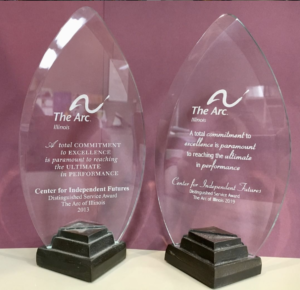 2019 marked the second time that Independent Futures has received The
2019 marked the second time that Independent Futures has received The 
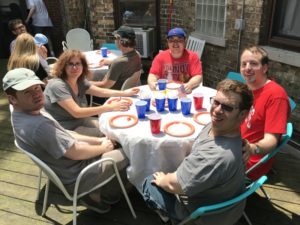

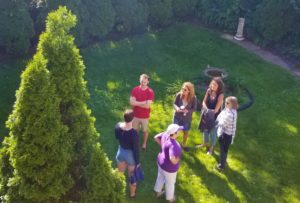 By now, you may be convinced that it is time to start planning for your loved one’s next home. After a few frustrating late night sessions with Google, you realize that finding community housing options for people with disabilities isn’t easy. After you have begun applying for or securing funding, what do you do next?
By now, you may be convinced that it is time to start planning for your loved one’s next home. After a few frustrating late night sessions with Google, you realize that finding community housing options for people with disabilities isn’t easy. After you have begun applying for or securing funding, what do you do next? 
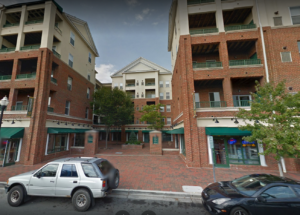
 This blog was written by our community partner Michael Walther of Oak Wealth Advisors. As experts in special needs planning, the people at Oak Wealth Advisors can provide your family with the support you need to put your future in order.
This blog was written by our community partner Michael Walther of Oak Wealth Advisors. As experts in special needs planning, the people at Oak Wealth Advisors can provide your family with the support you need to put your future in order.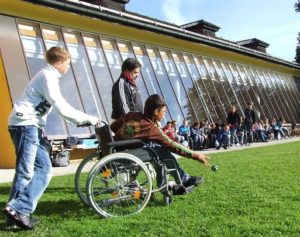 When most young adults finish school, they will make decisions about where they want to live, with whom they want to live, and what career they want to pursue. When the individual has special needs, the decisions are more complicated and usually require significant input from parents and others. Typically, the development of life skills and the focus on a future lifestyle are also developed during high school years. Many times, individuals with special needs age out of the school system without their independent life skills fully developed and some of their lifestyle questions unanswered.
When most young adults finish school, they will make decisions about where they want to live, with whom they want to live, and what career they want to pursue. When the individual has special needs, the decisions are more complicated and usually require significant input from parents and others. Typically, the development of life skills and the focus on a future lifestyle are also developed during high school years. Many times, individuals with special needs age out of the school system without their independent life skills fully developed and some of their lifestyle questions unanswered. There are two primary obstacles to successful special needs planning. Time and money. You have to accept that you cannot do everything or buy everything you would like for your loved one. However, successful planning will help you achieve more of your planning goals by making more effective use of your time and helping you stretch your dollars. In addition, the planning will supplement what the family can provide with as many government resources as possible. Effective special needs planning results in greater peace of mind for all family members.
There are two primary obstacles to successful special needs planning. Time and money. You have to accept that you cannot do everything or buy everything you would like for your loved one. However, successful planning will help you achieve more of your planning goals by making more effective use of your time and helping you stretch your dollars. In addition, the planning will supplement what the family can provide with as many government resources as possible. Effective special needs planning results in greater peace of mind for all family members.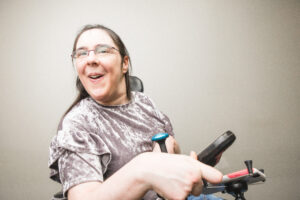 Together, the pair went over tips and what to expect in informational interviews. Sarah’s dream job was to be an assistant teacher. “The best I thought I could shoot for was taking tickets,” Sarah said. But then, her informational interview took a positive turn.
Together, the pair went over tips and what to expect in informational interviews. Sarah’s dream job was to be an assistant teacher. “The best I thought I could shoot for was taking tickets,” Sarah said. But then, her informational interview took a positive turn. 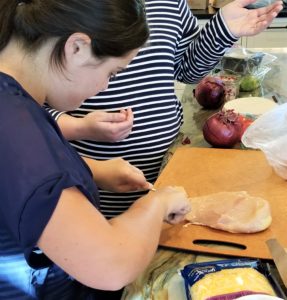 For the rest of the year, startlingly high unemployment rates for people with disabilities persists. We dream of a day when more individuals with disabilities have opportunities like this one that Sarah had, when community employers discover the gifts that individuals have to share.
For the rest of the year, startlingly high unemployment rates for people with disabilities persists. We dream of a day when more individuals with disabilities have opportunities like this one that Sarah had, when community employers discover the gifts that individuals have to share.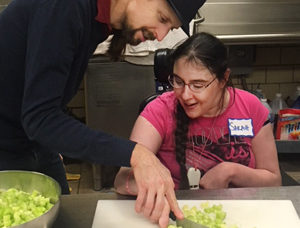 Since 1990, disability continues to be defined and redefined again. The Olmstead Act promoted community-based, independent living whenever possible. Recently, the ADA Amendments of 2008 altered the definition of “disabled” so it is easier to establish eligibility for protections.
Since 1990, disability continues to be defined and redefined again. The Olmstead Act promoted community-based, independent living whenever possible. Recently, the ADA Amendments of 2008 altered the definition of “disabled” so it is easier to establish eligibility for protections. 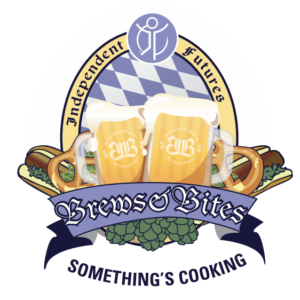 Thanks to generous donors and our wonderful community, there are many opportunities for guests at Brews & Bites to win while supporting people with disabilities in Evanston. These opportunities include 4 raffle baskets, 2 gift card trees, and a beer & wine pull.
Thanks to generous donors and our wonderful community, there are many opportunities for guests at Brews & Bites to win while supporting people with disabilities in Evanston. These opportunities include 4 raffle baskets, 2 gift card trees, and a beer & wine pull. 
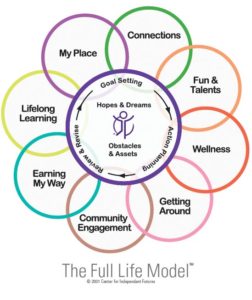 This year, the gift card tree will represent our Full Life Model. The model guides our work as tutors support participants in learning the life skills necessary to live independently. The 8 circles represent areas of a full life, which the leaves of the gift card trees will also represent.
This year, the gift card tree will represent our Full Life Model. The model guides our work as tutors support participants in learning the life skills necessary to live independently. The 8 circles represent areas of a full life, which the leaves of the gift card trees will also represent. 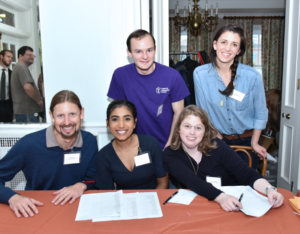 This year there are two ticket levels: regular adult tickets & young adult tickets. The difference between these two are the number of drink tickets allotted and pricing. While adult ticket purchases come with 9 drink tickets, the young adult tickets receive 3.
This year there are two ticket levels: regular adult tickets & young adult tickets. The difference between these two are the number of drink tickets allotted and pricing. While adult ticket purchases come with 9 drink tickets, the young adult tickets receive 3. 